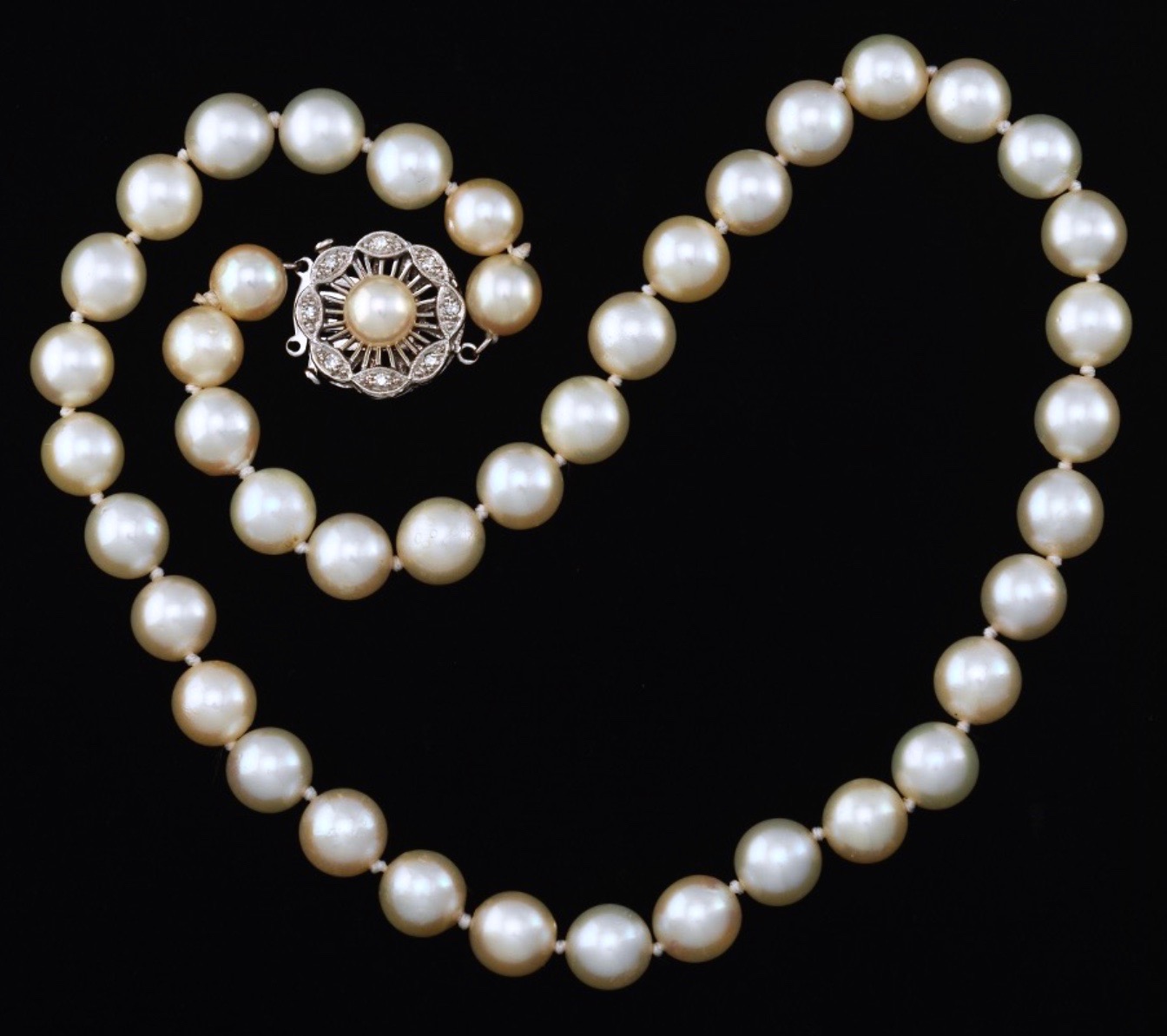

Title: Vintage Gold Pearl Diamond Single Strand Luxury Necklace
Shipping: $29.00
Artist: N/A
Period: 20th Century
History: Art
Origin: North America > United States
Condition: Excellent
Item Date: N/A
Item ID: 124
A spectacular find from a personal prominent estate / Vintage Ladies' Gold, Pearl and Diamond Single Strand Necklace 15 ¼" 14k white gold slide-in clasp with safety catch, single strand pearl necklace, pearls measuring 7.25mm to 8.25mm; clasp accented with round single cut diamonds, total estimated diamond weight 0.08 ct; marked on the clasp; overall weight 35.7 gm. Condition: Very good. The finest quality of natural pearls have been highly valued as gemstones and objects of beauty for many centuries. Because of this, the pearl has become a metaphor for something rare, fine, admirable and valuable. Pearls have been harvested and cultivated primarily for use in jewelry, but in the past were also used to adorn clothing. They have also been crushed and used in cosmetics, medicines and paint formulations.
Whether wild or cultured, gem-quality pearls are almost always nacreous and iridescent, like the interior of the shell that produces them. However, almost all species of shelled mollusks are capable of producing pearls (technically "calcareous concretions") of lesser shine or less spherical shape. Natural pearls are nearly 100% calcium carbonate and conchiolin. It is thought that natural pearls form under a set of accidental conditions when a microscopic intruder or parasite enters a bivalve mollusk and settles inside the shell. The mollusk, irritated by the intruder, forms a pearl sac of external mantle tissue cells and secretes the calcium carbonate and conchiolin to cover the irritant. This secretion process is repeated many times, thus producing a pearl. Natural pearls come in many shapes, with perfectly round ones being comparatively rare.
Link: https://en.wikipedia.org/wiki/Pearl
A pearl is a hard, glistening object produced within the soft tissue (specifically the mantle) of a living shelled mollusk or another animal, such as a conulariid. Just like the shell of a mollusk, a pearl is composed of calcium carbonate (mainly aragonite or a mixture of aragonite and calcite) in minute crystalline form, which has been deposited in concentric layers. The ideal pearl is perfectly round and smooth, but many other shapes, known as baroque pearl can occur.